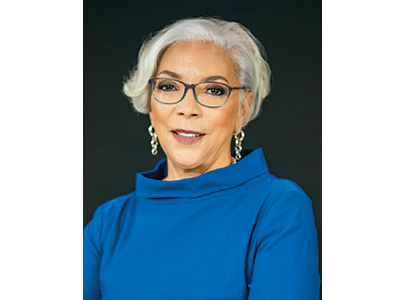Newspaper readers are voters; voters ‘hungry’ for ‘professional integrity’
Mar 28, 2022
FOR IMMEDIATE RELEASE
Contact: Kate Decker, kate@nna.org
HARRISBURG, Pennsylvania — In monitoring current events and political updates, community newspapers continue to grow in trustworthiness (7.38/10) and newspaper readers are voters (96%), Susquehanna Polling and Research Inc. found in a March 2022 survey.
The survey of 1,000 adults from rural and urban communities across the U.S. conducted for the National Newspaper Association and NNA Foundation of Pensacola, Florida, also studied opinion of public notices and advertising.
VOTING
There does in fact exist a strong correlation between those who read community newspapers and those who cast ballots in elections. A combined 96% of readers of local newspapers specifically (N=769 out of the 1,001 total sample), say they plan to vote this November -either “very” or “somewhat” likely.
Overall, 89% of the respondents said they are “very likely” to vote in upcoming elections this year for U.S. Congress, U.S. Senate and other federal and state elections, 6% said “somewhat likely” and 4% said “not at all likely.”
The study found local newspapers as the most “trusted” source (of all mediums tested) when it comes to learning about candidates for public office. On a 10-point scale (with 10 being the “highest”), local newspapers are rated a 7.38, higher than TV stations (6.45), radio (5.58), political mailings (4.63) or social media platforms (2.65).
This compares to 2019, when on the issue of trustworthiness, community newspapers represented a more trusted news source (5.77 on a 10-point scale) than other news sources, rating higher than national network TV news (5.13), cable TV news shows (4.60) and all others. Social media sources like Twitter or Facebook were rated lowest, at 2.92.
“It seems to us,” Jim Lee, president, Susquehanna Polling and Research, Inc., said, “that voters are increasingly hungry for a higher level of professional integrity when it comes to journalism (both local and national) in today’s age of constant cable TV news and partisan leaning news media outlets.”
“Although the metrics and items in our list have changed from prior years, prior years also shows trust in community newspapers had consistently received higher mean scores than competitor sources,” Lee said. “Moreover, readers of community newspapers rate trust in their local papers at an even higher 7.83 on a 10-point scale.”
TV stations (70%) and local newspapers (68%) are most often relied on as news sources to make decisions about elections (either very or somewhat often), compared to much lower scores for direct mailings from candidates or political parties (44%), radio stations (40%) or social media platforms (19%).
NEWS HABITS
A combined 77% of respondents say they read a newspaper that covers their local community (a slight increase from a 65% average, 2017-2019), consumed via printed edition and online edition, as well as these additional online options that were not in previous surveys: Facebook, YouTube, TikTok or other social media platform.
Newspapers, as a medium used either as a “primary” or secondary” source of information, has held steady over the years. In the current poll, a combined 24% say they rely on newspapers as either their primary or secondary source of information for news.
In terms of the originator of news content when respondents read stories on the internet or social media, the poll shows nearly 4 in 10 (or 39%) think newspapers are the originators of the content, while 28% think it comes from TV. An additional 27% are not sure, which shows there is no real consensus on this.
Local newspapers also continue to receive high metrics on things like “[it] informs me” (93% agree), “[it] provides valuable local shopping and advertising info (81% agree), and “my household relies on [it] for local news (83%).
STATE OF THE FIRST AMENDMENT AND PUBLIC NOTICES
A combined 96% say it’s very or somewhat important to have reliability and truth in local journalism, including 83% who think it’s “very” important.
In terms of the overall importance of public notices on a 10-point scale, respondents rate access to public notices a 6.66, down from a 7.40 in 2019 (no data exists for 2018-17). Readers of local newspapers specifically rate access to public notices a slightly higher 6.72.
ADVERTISING
Community newspapers continue to be the most-trusted information medium and the go-to source for shopping decisions. Of the respondents, 43% cited the local newspaper as their top resource for making shopping decisions, followed by direct mailings (25%), TV stations (21%), in store promotions (19%), social media sources (19%) and radio ads (5%).
When reviewing internet content, 34% notice online ads “always” or “some of the time” (down from 48% in 2019) and a combined 62% reported they notice Google ads or other advertising banners “occasionally” or “not at all.”
Members of the National Newspaper Association may download the full survey and analysis at https://www.nna.org/nna-nnaf-readership-survey-2022
This poll was conducted by Susquehanna Polling and Research on behalf of the National Newspaper Association and NNA Foundation. The NNA, which is the largest national newspaper association with 1,600+ members across America, protects community newspapers through active and effective government relation programs that address the issues affecting community newspapers.
Interviews were conducted March 7-14th Mondays through Fridays and at select weekend times as prescribed by state law. The sample frame was constructed and designed using a list of zip codes (supplied by Client) representing those areas in the continental USA where community newspapers are either available and/or commercially sold. Using these zip codes, a listed sample of telephone records is purchased using a random selection of households represented by these zip codes from Pollster’s preferred list vendor2. The amount of telephone records acquired for each zip code is proportionate to the population of each zip code’s unique area, with all zip codes ultimately combined into a composite universe so population parameters could be estimated, and a list of pre-assigned quotas could be generated. The number of interviews conducted within each geographic region or unit of measurement (i.e., zip code) is then monitored to ensure zip codes are sampled accordingly, thus not over or under sampled in relationship to their overall weight in the composite universe. Statistical weighting may be applied to ensure the demographic balance of the sample for 1,000n is a “representative sample” of the composite universe based on age, ethnicity and other unique demographic characteristics for the population universe of all zip codes combined. Zip codes are also grouped into eleven regional groupings with all states represented within a region of the USA to serve as a cross-check on balance.
The margin of error for a sample size of 1,001 interviews is +/-3.1% at the 95% confidence level.










